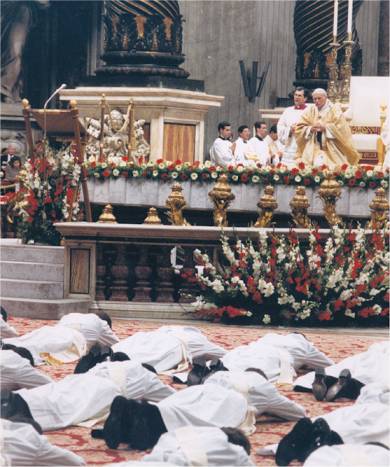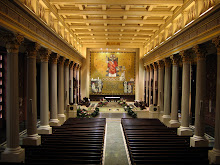My next article for the Catholic Telegraph appears this week, focusing on the rise of Temple Sacrifice in Old Testament Judaism. Connections to Christ will be made in my next article.
As the Israelites moved from a nation on the move to settling in cities in the newly conquered Promised Land, one of the first desires was to build a suitable house for the Lord, as David desires in Second Samuel. The People of Israel had been worshiping God in the Tent of Meeting since the time of the Exile some 200 years prior, and now that they were established, a permanent structure was seen as fitting.
However, because David had too much blood on his hands, God chose his son Solomon to build the original Temple in Jerusalem, on the highest mountain within the City of David, where it continues to stand, now under the Dome of the Rock Mosque.
The location that was chosen was not accidental. Throughout the Scriptures, sacrifice is offered to God not in the low places, swamps and marshes; but rather on the mountains so that they could be ‘closer’ to God, at least metaphorically: Noah offers his sacrifice on coming out of the Ark on Mt. Ararat, Abraham ‘sacrifices’ Isaac on Mt. Moriah, Moses’ sacrifice upon Mt. Sinai, and Solomon builds the Temple upon Mt. Zion. This ‘ascent’ represents a lifting of hearts and minds to the God of Heaven and orients us towards the life to come, rather than life here on earth. We can see this reflected in architecture that raises the altar and the main sanctuary in Catholic church buildings so that we, too, may lift our eyes to the Lord.
Worship in the Old Covenant, however, was not just the ‘lifting of eyes to the Lord.’ It was very much centered around sacrifice. Daily in the Temple, at 9:00 am and 3:00 pm, the Tamid would be offered before the Lord. This offering of a lamb, bread and wine was a continual reminder that the People of Israel were to be offered to God. They are marked as God’s Chosen People, and the lamb is symbolic of an offering of self to the Lord God. In this way, all the people participated in Temple worship on a daily basis.
Yet, there was more than one type of sacrifice offered in the Temple, so that while the Tamid was the high point of the day, animals were being offered continually to the Lord through the ministry of the priests, of particular note for our discussion here is the Sin Offering discussed in Leviticus 4. Here, the layman brought an animal before the priest and laid his hands upon it, confessing his sins to the priest as he did so, symbolically placing them upon the head of the sacrifice. The layman then slits the throat and cleans and prepares the animal, which is then presented to the priest. The priest has caught the blood of the animal, and, with the rest of the carcass, burns the sacrifice on behalf of the layman on the Altar of God.
In looking at the Catholic Mass of today, strong parallels leap forward to bring us not just to Jesus’ offering of self on the Cross, but back to the very foundations of sacrifice as instituted by God, through Moses, on Mt. Sinai. God truly has planned this out from the beginning. As we enter into the deep mysteries we celebrate at every Mass, all of history becomes present in an eternal, and now even greater, offering back to God the Father, for it is now the offering of Christ back to His Eternal Father. Reality is never more “real” than in the Eucharist!
Hence, as Catholics, we see the great need for our priests. It is the priest alone who, unworthy though he is, presides at these great cosmic mysteries. Here, he offers not just the bread and wine to be turned to the Body and Blood of Christ, but also himself and his people, who are no longer just chosen, but adopted to be sons and daughters of God, in Christ.
For more information on the priesthood and the Year for Priests, visit www.cincinnativocations.org
Subscribe to:
Post Comments (Atom)










1 comment:
Fr Kyle- I read somewhere that a formative event in your discernment to the priesthood was a visit/pilgrimage to Our Lady's Farm in Falmouth, Ky. I have been there also and have been quite taken by the place. What about your visit there affected you? Stephen
Post a Comment